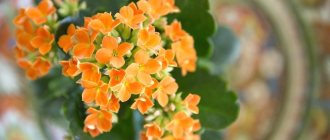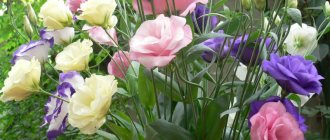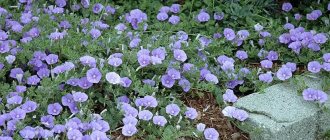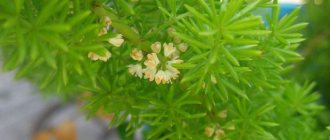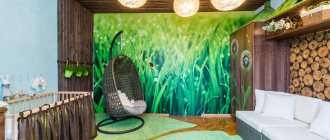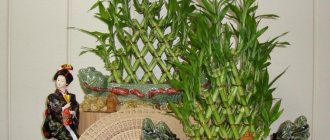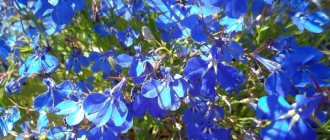Often, lovers of succulent plants, who have successfully mastered caring for simple and very common species, want to own some rare plant. This is a plant that fellow flower growers do not have. This rare succulent is not found in regular flower shops; you have to turn to online stores. There is no need to be afraid of this; succulents tolerate being sent by mail well. It is better to buy plant cuttings than seeds. This will make it easier for you to make sure that they sent exactly what you wanted.
Take a look at the 15 rare types of succulents offered here and choose the ones that best suit the conditions of your homes. Temperature, humidity, and lighting of the room where the plants will be are of great importance.
Avonia
A compact plant from the portulaca family. It grows naturally in areas of South Africa. The plant has branching shoots covered with scales. The leaves are very small and hidden under the stipule; you will need a magnifying glass to see them.
The root system consists of small tubers. Over time, the shoots stretch out and fall down, like hanging plants. It blooms with delicate white and yellowish flowers. Sometimes there are species with other colors. The plant is self-pollinating and produces seeds at home.
- Loves year-round illumination with diffused light.
- The best place for Avonia is eastern and western windows. In summer and spring, the preferred temperature is from 20 to 25 degrees; in winter and autumn, the temperature is reduced to 10-15 degrees.
- It is content with the dry air of apartments and does not require additional humidification. Watering Avonia is done after the earthen ball has completely dried out after the previous watering.
- Fertilize once a month with liquid fertilizer for cacti. Fertilizing is applied in the spring and summer.
- Since Avonia grows very slowly, it rarely needs replanting, once every few years and after purchasing it in a store. She needs a shallow pot filled with a mixture of equal parts clay, leaf soil, sand and crushed charcoal, or commercial soil for cacti and succulents.
The most common and decorative species: Avonia Quinaria, Avonia Bumopodobnaya, Avonia Albissima, Avonia Meyer.
general information
The group of succulents is distinguished not by appearance or origin, but by living conditions. Special fabrics are able to store and retain water for a long time. This is how plants survive in desert regions. For example, in hot South America or Africa.
All succulents are divided into two types:
1. Stem. Moisture is retained in the powerful thick stem, and the leaves are small and inconspicuous. Sometimes - in the form of thorns. This group includes many cacti and spurges.
2. Leafy. Moisture is stored in the leaves. The most famous examples are aloe, “money” crassula, herbaceous haworthia and “stone” echeveria.
Several mechanisms that have developed as a result of evolution allow succulents to save and store moisture:
— Leaves and stems are covered with a dense cuticle. It not only provides mechanical protection, but also prevents evaporation; — The fluff on the surface of the body condenses moisture; — Rounded shapes leave less area for moisture evaporation. This applies to both trunks and leaves; — Extended root systems reach the aquifers of the soil; — Surface roots draw moisture from above: dew and precipitation; — The arched leaves act as gutters through which water flows to the roots during rain;
— The ribbed stem gives a “head start” when storing water reserves. The plant absorbs moisture until these ribs are fully extended. Thanks to this, it does not burst; — The leaves are collected in rosettes with a reduced stem. This minimizes the flower's needs; — The number of breathing pores is reduced to a minimum; — The flower breathes at night. Internal moisture escapes less through the pores when the surrounding temperature is lower; — Ground parts may die off if the drought lasts too long. But then they grow again as conditions improve.
There are also mechanisms to protect against overheating. These are vertical forms, a minimum of above-ground parts with a developed rhizome, light colors and special protective pigments.
Aloinopsis
Rare dwarf succulents from the Cape Province of South Africa. They belong to the family Aizoonaceae. In appearance they resemble some species of Aloe and Lithops (“living stones”). The tap root is quite long, the stem is short. The leaves are fleshy and thick. They come in green and bluish colors. The leaves are collected in a loose rosette, the leaf width is about 2.5 cm, the length is up to 4 cm. There are species with spines and warty growths.
- It blooms in summer with medium-sized flowers of yellow and pink shades. A low peduncle grows from the center of a leaf rosette.
- The plant loves partial shade, with bright sun in the morning or evening.
- The temperature in winter is from 8 to 10 degrees, in summer from 17 to 25. It can overwinter at room temperature, but it is better to move it to a cooler place during the dormant period, since in warm conditions in winter a flower bud may not form.
- Grow in tall containers, adding a layer of drainage to the bottom. For the substrate, use a mixture of leaf soil and sand in equal parts, adding a little clay and crushed coal.
- Watering for this type of succulent in summer requires moderate watering at intervals of 2-3 weeks; during the dormant period the soil is only slightly moistened. Excessive watering can cause the plant to rot.
- Propagated by rooting leaves in spring. Before planting, the cuttings must be given time to dry. Sprinkle the cut well with crushed charcoal
The most common species: Aloinopsis Pierce, Aloinopsis Lückhoff, Aloinopsis Orpen, Aloinopsis Rosette, Aloinopsis Malherbe, Aloinopsis Schunes, Aloinopsis Villeta, Aloinopsis red, Aloinopsis tape.
Boveya or Boveia (Bowiea)
Belongs to the Hyacinth family. The bulbous plant is found naturally in the desert regions of Kenya, Tanzania, South Africa and Zimbabwe. The plant belongs to the herbaceous succulent species. The bulb in adulthood reaches a diameter of 30 cm and is covered with protective scales. The root system is powerful and branched.
The stems are creeping and can hang down like hanging plants. The leaves are small, branched, but grow only on young shoots. At the end of the growing season, the leaves are replaced by peduncles. They reach a length of 3 meters and have small white flowers. Since the aboveground part is quite voluminous, the plant needs supports for green mass.
- During the dormant period, which lasts about 6 months, all shoots and peduncles dry out. In Bovea, periods of dormancy and growing season can change under the influence of external conditions.
- During the waking period, the plant needs bright but diffused sunlight. In direct sunlight, the plant can get severely burned.
- The temperature during rest should not be higher than 15 degrees and lower than 8 degrees. If the temperature is higher than expected, then Boveya will not shed its leaves and new shoots will not appear. During the growing season, high temperatures cause the bulbs to dry out. During the growing season, room temperature is suitable.
- Watering in the summer is carried out only when the soil ball is completely dry. In winter, the plant is not watered at all. Air humidity should be low, like the normal temperature in the apartment.
- You can make the soil yourself from 2 parts leaf soil, 1 part turf and 1 part sand. When planting a bulb, it is buried by one third. You need to fertilize once every two to three years with complex mineral fertilizer.
This plant is represented in a single form in home floriculture.
Borodnik (Jovibarba)
This succulent resembles a rose flower in its appearance. Belongs to the large Tolstyankov family. A close relative of the succulent Molodilo, but separated into a separate subspecies. It grows naturally in the Balkans and the Eastern Alps.
- Borodnik loves sunlight, so indoors it is placed on southern, southwestern and southeastern windows. If this succulent is grown indoors, in a greenhouse, or on a terrace, then frequent ventilation is necessary.
- It is necessary to ensure differences in day and night temperatures. When growing in open ground, you need to choose the most illuminated place.
- Borodnik, growing in the fresh air, is not afraid of heat and can withstand light frosts, especially under cover. Indoors in summer the plant feels comfortable at room temperature in summer; in winter it is necessary to maintain a temperature of 10 degrees.
- Borodnik is not afraid of drought, both in an apartment and in the air; excess moisture, which can lead to rotting of the plant, is much more dangerous. Therefore, the substrate in which Borodnik grows must be air- and moisture-permeable. The container should not be deep and have a hole to drain excess water.
- It blooms and sometimes produces seeds only once in its entire life. After this, the rosette breaks up into several young plants, which can be transplanted into suitable soil.
Also read: Variety of domestic types of succulents. Article for beginner gardeners
The most famous varieties are: Allion's Borodnik, Hairy Borodnik, Broad-bearing Borodnik, Heuffel's Borodnik, and Shoot's Borodnik.
Growing Succulents
Growing succulents from seeds is very time-consuming and difficult. Typically, this method is used only when breeding new varieties. In other cases, normal vegetative propagation is sufficient.
Dry the cutting or leaf for several days to avoid introducing bacteria from the soil onto the fresh cut. You can additionally use a growth stimulator. Moisten the soil with warm water and deepen the cutting by 15-20 mm. Leave the succulent alone for a few weeks in a bright, warm place until it takes root.
Many varieties cope with reproduction on their own. Even leaves dropped on moist soil germinate quickly. Keep an eye on this if you don’t plan to create your own mini-garden.
Dracaena (70 photos): types and features of care
Bulbine
The Bulbina genus belongs to the Liliaceae family and has about 30 different species. Its homeland is South America. Some species have bulbs, others have a bulbous or tuberous root system. The genus unites plants that are very different in appearance. Bulbins can grow both outdoors (as annual plants) and indoors.
- Plants of this genus love good lighting. In an apartment, their small types can be placed on windows facing south, southwest and southeast. In winter, when it is time for the plant to rest, it can be moved to a darker and cooler room.
- The soil should be loose and neutral in acidity. It can be composed of equal parts of peat, leaf and soil. To prevent root rotting, you can add crushed charcoal.
- Water the plant sparingly as the substrate dries. During the dormant period, watering is completely reduced. Fertilizers are given only during the growing season. Complex mineral fertilizers are applied twice a month, excluding the winter dormancy period.
Of the numerous species of Bulbina, several of the most interesting can be identified: Annual Bulbina, Shrubby Bulbina, Half-bearded Bulbina.
Adromiscus
Belongs to the Crassulaceae family. Its homeland is southern Africa. Includes more than 60 species. The most popular varieties among gardeners are: Comb, Spotted, Cooper, Pellnitz, Marianna, Hera, Hemispherical. All representatives have differences in shape and color, and are easy to care for. It tolerates high temperatures up to +30, loves good lighting and moderate watering.
Glottifillum
This low-growing succulent belongs to the Aizoonaceae family. South Africa is considered its homeland, but the plant is also found in other arid and hot areas. 11 of the 60 existing species are cultivated at home.
The succulent grows very slowly, reaching a height of only 15-16 cm. The leaves are thick and cylindrical. They usually grow in two rows. The color of the leaves varies from light green to dark emerald. Some species have a waxy coating that protects against strong solar radiation.
- Glottiphyllum has very beautiful flowers, and blooms twice a year - in early summer and autumn. The flowers are large, up to 6 cm in diameter, on small peduncles. The inflorescences resemble dandelions and are white, yellow, and orange in color.
- The succulent is planted in a substrate intended for succulents and cacti. If the soil is not loose enough, add a little coarse sand. You can make your own substrate from equal parts of turf soil, peat and sand. Be sure to add a layer of drainage to the bottom of the container.
- The succulent feels good on southern windows, where there is a lot of light. But it is better to shade it from direct midday rays. With poor lighting, the plant stops growing and may get sick.
- In summer, temperatures between 23 and 30 degrees are ideal, which corresponds to room temperature at this time. In winter, the optimal air temperature is from 14 to 16 degrees. You should not place it near radiators. Do not spray this succulent.
- Water the Glottiphyllum with warm, soft water without flooding the rosette. In summer, watering is carried out 2-3 times a month, in winter every 30-35 days, avoiding overflow.
- From mid-spring and throughout the summer, fertilizing is added twice a month with complex fertilizers, in the fall they are reduced to once, and in winter they are not fed at all.
Three types of this plant are most suitable for keeping indoors. These are Glottiphyllum tongue-shaped, Glottiphyllum infertile, Glottiphyllum cruciform.
Greenovia
Evergreen succulent of the Crassulaceae family. The miniature succulent comes from the Canary Islands. Forms a lush rosette of round leaves, which dies after flowering. The flowers are bright yellow, collected in racemose inflorescences.
- Greenovia is grown on eastern and western windows, as it loves diffused sunlight.
- In the warm season, the succulent is suitable for normal room temperature. In winter, to ensure a full period of rest, the air temperature should be no higher than 10 degrees.
- In spring and summer, Greenovia is watered with moderately purified water. The plant should not be sprayed. In winter, watering is stopped completely, only occasionally moistening the top layer of soil.
- Feed the plant once a month with liquid fertilizer for succulents and cacti. The soil selected is loose and light, and conducts water well. A substrate made up of 1 part sand, 1 part humus and ½ part leaf soil is suitable. Particular attention should be paid to the presence of drainage.
The most common are two types of Greenovia: golden and double.
Brighamia
Here is a representative of the Kolokolchikov family. Brighamia is often called the Hawaiian palm tree, and for good reason, since its homeland is the Hawaiian Islands. This is a very ancient plant, it has existed on earth for about 1 million years. There was a period when this succulent was on the verge of extinction, but thanks to the efforts of breeding scientists, populations were restored and distributed around the globe in the form of domestic flowers.
Also read: Madagascar palm - Pachypodium. Exotic flower on your window
Only two species are grown: Rocky and Brighamia remarkable (insignis). A heat-loving plant, can tolerate temperatures up to +30 in summer, and at least +15 degrees in winter. Loves fresh air and diffused sunlight. Watering is moderate, allowing the soil to dry out, with warm water. Flowering time is from September to December.
Dinteranthus
Dinteranthus is a very small genus in the Aizoaceae family. The genus includes from 4 to 6 species (according to different sources) and grows in the Cape Province in the Orange River valley. This perennial is related to Lithops and also has a popular name - “living stones”.
Dinteratus has powerful roots, the stem is short and located underground. The ground part has a rounded shape and is very similar to real river stones. The leaves of the succulent are paired, separated by a hollow, but even when flowering they retain a rounded shape. The color of the leaves can be gray, greenish, even cream. Often the upper part is decorated with a spotted pattern.
Also read: Top 15 rare species of succulents with photos and names. Choose a plant to your liking!
It blooms with a rather beautiful flower, reminiscent of a chamomile. The relatively large inflorescence is white, yellow and orange. The fruit is a pod with very small seeds. Dinteranthus grows very slowly.
- When caring for it, it is very important to alternate periods of winter dormancy and the active phase of the growing season. Any window except the north one is suitable for it.
- Temperatures in spring and summer range from 18 to 25 degrees Celsius. In autumn, the temperature is gradually reduced to 8-10 degrees, which is optimal for winter recreation.
- “Living stones” should not be sprayed; they cannot tolerate high humidity and begin to suffer from various diseases. You should also not over-moisten the roots when watering. One tablespoon of water is enough for one Dinteranthus in warm weather. In winter they don't water at all.
- Complex fertilizer for succulents and cacti is applied after changing leaves (molting) once a month, at half the dose specified in the instructions.
- For planting, use shallow pots with a good drainage layer and filled with substrate for industrially produced succulents and cacti. The top layer is covered with drainage material, which helps avoid rotting.
Two types of Dinteranthus are popular in indoor floriculture: Paul Evans' Dinteranthus Van Zyl's Dinteranthus.
Succulents – photo
Still not sure whether to get succulents? We offer you the last and decisive argument. Succulents are ideal for creative flower arrangements, florariums, phyto-walls and original design solutions. Take a look at these photos and see for yourself!
Did you like the post? Subscribe to our channel in Yandex.Zen, it really helps us in our development!
Dudleya
Belongs to the Tolstyankov family. Occurs in the arid regions of Mexico and California. It is a beautiful rosette of succulent, flat, light green leaves with pointed tips. When placed in a well-lit place, the edges of the leaves acquire a burgundy tint. There is a waxy coating that protects against strong evaporation of moisture from the leaves. During the flowering period, a large arrow with many yellow or red flowers grows on the side of the rosette.
- Like all similar succulents, during warm periods it prefers a temperature of 20 to 25 degrees. In winter, you need to lower the temperature to 15-12 degrees for proper rest.
- The location of the plant should be well lit. On warm summer days, you can take it out into the fresh air (balcony, terrace or loggia), but you need to cover it from direct sunlight.
- The substrate must have a neutral Ph; a store-bought mixture is good for succulents and cacti. There must be a sufficient drainage layer at the bottom of the pot.
- Water abundantly in the summer, but then allow the earthen clod to dry out. Fertilizers are applied along with watering once a month in half the dose. Complex fertilizers are suitable for cacti and succulents. It is necessary to water carefully to the very roots, avoiding water getting into the outlet.
The most interesting and unpretentious species of Dudleya in indoor floriculture: Hasseya, Pachyphytum, Mealy, Anthony.
Aptenia
Belongs to the Aizaceae family, the plant’s homeland is South Africa and South America. The genus Aptenia includes only about 5 species. Can be grown indoors and outdoors in the summer. All species are actively blooming. The peculiarity of flowering is that the flowers of the plant open at noon. Types: Cordifolia, Variegate, Lanceolate, White-flowered, Haeckel's.
A light-loving plant, but it needs to be accustomed to direct sunlight gradually. Prefers well-ventilated rooms; in summer it is better to take it out onto the balcony. In autumn and winter it is necessary to create a period of rest at a temperature of +10 degrees. This will promote abundant flowering in summer. Watering is moderate, allowing the soil to dry out.
Caralluma
The perennial plant belongs to the Lastovnevy family. The succulent has fleshy, faceted stems covered with denticles. In its natural environment, Carallum lives in the desert areas of Africa, Arabia and India.
The flowers of the plant have elegant shapes, variegated colors and are quite beautiful, but they emit a very unpleasant smell of rotten meat, which attracts natural pollinators - flies. But in indoor conditions the smell is weak.
- Windows facing east or west are ideal for Caralluma. Here she feels great and blooms regularly.
- The temperature in spring and summer corresponds to room temperature, about 20-25 degrees. In winter, the plant can be moved to a cooler room, where the temperature does not drop below 10-12 degrees.
- The air should be dry, like all succulents; Caralluma does not like damp rooms. No spraying is required either.
- In the warm season, water rarely, but abundantly. After watering, wait until the soil is completely dry before watering again. In autumn and winter, it is enough to lightly moisten the soil.
- Complex fertilizer is applied once a month only during the growing season. Caralluma grows quickly; wide and shallow pots with sufficient drainage are suitable for it.
- The soil can be made independently from equal parts of coarse sand, leaf and turf soil, peat with the addition of crushed charcoal. You can use ready-made soil from the store for succulents and cacti.
Three types of Carallum are most interesting for lovers of indoor floriculture and rare plants: Socotrans, Hesperidum, and European.
Carpobrotus
The ground cover succulent belongs to the Aizoonaceae family. Grows in Africa, South America and Australia. The leaves are fleshy, pointed, retaining moisture. Leaf color varies from green to burgundy. It blooms very beautifully. Quite large flowers (up to 5 cm in diameter) can have yellow, pink, and white shades.
- Prefers well-lit places; it is better to place it on southern windows, shading it from direct rays of the sun. On warm summer days it is good to take the plant out into the fresh air.
- Acceptable air temperature is about 25 degrees Celsius. By winter, Carpobrotus enters the dormant stage and the temperature is reduced to 10 degrees.
- In spring and summer, water frequently, but not heavily. It is enough to wet the top layer of soil. In winter, watering is rare and small.
- In indoor conditions, you cannot do without fertilizing with complex fertilizer for succulents and cacti. They are applied once a month along with watering.
- The soil for replanting consists of 1 part leaf soil, 1 part sand, a little clay and crushed coal. You can buy a ready-made mixture for succulents and cacti in the store, adding a little sand to it.
Also read: Aloe - 11 popular species to grow at home
Two popular species are of interest to amateur flower growers: Crapobrotus rossa and Carpobortus edible and Carpobrotus delightful.
Monanthes
Perennial succulent from the Tolstyankov family. Very short shoots can be creeping or erect. There are leaf rosettes at the tops of the shoots. Small thick leaves are sometimes arranged oppositely, but more often alternately. They have an ovoid shape. The inflorescences are either umbellate or racemose and have 6-8-membered flowers, colored green, light pink or brownish.
- It develops well and grows only with sufficient lighting. For placement you should prefer south windows. In low light, the rosettes become loose and untidy in appearance. In winter, Monantes also needs light.
- In spring and summer, the plant feels quite comfortable at room temperature and can easily withstand the hottest days. In winter, you need to move the succulent to a cool room where the temperature is about 10-12 degrees.
- The air humidity should be the same as in a regular apartment. Additional moistening (spraying) is not required. In spring and summer, watering should be moderate. The interval between watering should be such that the soil in the pot dries out completely.
- In winter, watering is scanty, but the leaves should not be allowed to dry out. Fertilizer is applied rarely: once every 1-2 years.
The main species cultivated indoors are: wall-mounted Monantes, thickened Monantes, amidrian Monantes.
Portulacaria
This plant is a monotypic genus of the Portulacaceae family. Currently, one species is cultivated - African (in its natural habitat). It is a well-branched shrub with a woody trunk. Reaches 3 meters in height. The leaves are light green in color, oval in shape, with a pointed tip at the end.
Feels great in strong lighting and is not afraid of direct sunlight. In order for the bush to develop evenly, it should be turned towards the light. In winter, lighting is needed with special lamps for flowers. In summer it blooms with small pink flowers collected in a spike-shaped inflorescence.
Like all succulents, in summer it develops well at room temperature; you can also take it out to the balcony, since Portulacaria loves fresh air. In winter, the temperature is reduced, but not below 10 degrees Celsius. Watering in the summer is rare, but plentiful; in winter they water just a little.
Also read: Pedilanthus is a beautiful tropical shrub. Overview of species and care
Tylecodon
A genus of succulent plants from the Crassulaceae family, native to the countries of Namibia, South Africa, and Namaqualand. The leaves are simple, oval, can be covered with small hairs or, like ordinary succulents, smooth. The stems are thick and covered with light brown bark. The flowers are bell-shaped, collected in paniculate inflorescences. They have a red-brown or yellow-brown tint.
A big problem when growing is the fact that the period of active growth occurs in winter. Since Tilekodon is a lover of good lighting, it is impossible to do without llamas of artificial lighting, since the winter sun will not be enough.
- This plant also requires a special mineral soil, which you will have to make yourself from sand, granulate for draining the fine fraction, and charcoal zeolite.
- This succulent cannot do without fresh air in winter, but it should not be left in a cold draft. The temperature of our apartments is perfect for Tilecodon, as is the dry air.
- Doesn't like transplants, it's very difficult to survive them. Watering is very moderate at any time of the year. During the growing season (in winter!), watering can be increased and complex mineral fertilizer can be added.
Tilecodon is most often grown as a bonsai; the following species are suitable for this: Paniculata, Vallichi, Pearson, Ventricosus.
Trichodiadema
A compact bush with fleshy cylindrical leaves covered with suckers in which bristly hairs grow. Trichodiadem belongs to the Aizoonaceae family. In nature it grows in rocky desert areas of Australia, Asia, and America. Dense watery leaves are always arranged in pairs. But every year the old pair of leaves falls off and a new one grows. The leaves of the plant take on different colors.
They can be chocolate, gray, gray-green and even pinkish. The height of the plant depends on the species and ranges from 4 to 30 cm. The plant blooms in autumn. The flowers are daisy-like and come in shades of pink, white and yellow.
- The plant prefers to be located on southern windows. In summer it should be shaded from direct sunlight, otherwise burns may occur.
- Leaves need fresh air, that is, you need to ventilate the premises as often as possible. But the succulent only needs spraying during the period when it sheds its leaves.
- The preferred temperature in summer is 20-25 degrees. In winter, it should not fall below 15 degrees.
- The substrate is made up of 1 part leaf soil, 1 part coarse sand, 1 part clay. Be sure to add crushed stone and crushed charcoal. Don't forget about a good drainage layer.
- Watering this succulent should be done in the summer months as needed, when the substrate is completely dry after the previous watering. There is no need to water in winter.
The most common Trichodiadems grown indoors are: Densum, Bulbossum.
Huernia
A genus of plants belonging to the Kutrovaceae family. The closest relative of this family is Stapelia (Read more about popular types of Stapelia). In this genus, about 60 plants, which are native to the Arabian Peninsula, also grow in East and Southern Africa. Guernia's beautiful-looking flowers have an unpleasant odor.
The succulent loves good lighting, but direct sunlight should be avoided. Popular domestic species: Rough, Graceful, Bearded, Large-fruited, Kenyan, Striped, Primrose, Hairy. Comfortable growing temperature up to +28 degrees. Moderate watering is required, because... roots are susceptible to rot.
Fenestraria
A succulent plant from the Aizoonaceae family. The entire genus consists of one plant, Fenestraria aureus. Under natural conditions it grows in Namibia, Africa, and the Karoo Desert. Fenestraria has adapted to the sweltering desert heat in a special way. Its leaves are equipped with specific windows through which light penetrates. It is located at the very top of the leaf, separated by a membrane. It contains a clear liquid. This cunning natural device saves the succulent from overheating and drying out.
Fenestraria forms dense rosettes of cylindrical leaves narrowed to the base. The rosette grows only up to 3 cm in height. In summer it produces a peduncle with a small white or yellow flower. They open in the morning and close in the evening. It blooms in total for about a week.
- This succulent requires a lot of light, but it must be protected from the midday sun. If it is not possible to provide good natural lighting, you need to supplement the plant with special lamps.
- Fenestraria spends the winter rest period at temperatures from +12 to +10 degrees. The rest of the time, room temperature is suitable. Does not require additional air humidification.
- Fenestraria is watered in the summer 2 times a month in a tray. Therefore, the pallet must be high enough. In winter, watering is not required, but if the plant is very dry, you can moisten the soil with a spoon of soft water.
- The soil should be special for succulents and cacti. After purchasing in a store, the plant must be replanted.
Only one species is cultivated: Fenestraria aureus.
Popular domestic species
Since childhood, a familiar flower has been decorating apartment windowsills for many decades. But not every amateur gardener knows that Crassula can have a very unusual appearance. It would seem that the simplest plant, Crassula, can surprise even experienced gardeners. These can be either ordinary trees or hanging species or plants that resemble moss.
Crassula leaves are smooth or covered with fine fluff, color from light green to dark green, red or orange. Some species have variegated coloring and edging. Sometimes plant leaves are covered with dotted spots or stripes.
Crassula Atropurpurea (C. Atropurpurea)
C. Atropurpurea var.
watermeyeri The leaves are back teardrop-shaped, the width of the plate is about 3 cm, the length is 5 cm. The surface of the leaf is rough. In winter and in the shade, the leaf color is green; with constant exposure to ultraviolet light, the color can change from pink to yellow-orange. It usually blooms in winter. The plant produces an erect peduncle on which small white inflorescences are formed.
Crassula Arborescens tree (C. Arborescens)
Crassula arborescens subsp.
arborescens This tall growing species can reach 1.5-3 meters in height. The crown is branched, the trunk is brown-green, dense, up to 20 cm in diameter. The leaves are fleshy, smooth with a waxy coating, and colored light gray. The surface of the leaf is strewn with small red dots, the edge is burgundy-red. Size from 2 to 5 cm in length, round shape, short petioles.
Brown's Crassula (C. browniana)
C. Browniana © Apostolou Stavros
A small tree with a dense stem. It grows quickly, the height of an adult plant is 20–30 cm. The leaves are about 0.5 cm in length. Branches, leaves and trunk are pubescent. Blooms throughout the summer.
Also read: Useful plant - Aloe vera: proper care and folk recipes
Crassula Ben (C. Capitella Ben)
C. Capitella Ben © Green Page
Beautiful decorative succulent, height up to 30 cm. Stems are erect, propeller-like leaves are wide, pointed. Aerial roots form in the internodes of each stem. If the stem is tilted towards the ground, it quickly takes root.
The sheet plates are stacked opposite each other. The leaf color is bright green with a red edge. The closer to the top, the smaller the size of the leaves. At the very top of the head, the leaves transform into bracts. The inflorescences are pointed, the flowers are star-shaped.
Crassula Brevifolia (C. Brevifolia)
C. Brevifolia © Wayne Fagerlund
An upright species of Crassula, the height of an adult plant is from 30 to 50 cm. The stems are strong, tree-like, brown. The leaves are spherical, fleshy, juicy, about 1 cm long, 0.5 cm in diameter, and grow in pairs. The leaf color is green with a reddish edge. With age, the color changes to yellow-red or purple. Flowering period is winter. The inflorescences are small and white.
Crassula Temple of Buddha (Buddha) (C. Buddha's Temple)
C. Buddha's Temple
An exotic slow-growing species with an annual growth of 5 cm. When the plant reaches 15–20 cm, it lies on the ground under its own weight and grows horizontally. The leaves are shiny and bright green in color. The root system is superficial. The flowers are pale red or pink.
Crassula Barklyi (C. Barklyi)
Crassula Barklyi
The popular name "bandaged finger" accurately describes the appearance of the plant. A miniature columnar species, only 5–10 cm high. The leaf blades fit tightly to the stem and overlap each other as they grow. The leaves are densely dotted with cilia, which absorb moisture and nourish the plant. Flowers are formed at the top, white in color, small in size. The inflorescences have a bright aroma. After the flowering period, the plant does not die.
Crassula Garnet Lotus (C. Garnet Lotus)
C. Garnet Lotus © Giromagi
The leaves are thick, fleshy, covered with a waxy coating that resembles frost. The foliage color is garnet-purple. The leaf blades form an erect rosette up to 15 cm in height and 15–20 cm in width. The leaves are wide, gradually narrowing towards the growing point. The flowering is bright and rich. The flowers are bright red and grow in clusters.
Crassula Gollum (C. Ovate Gollum)
C. Ovate Gollum © Apostolou Stavros
Slow-growing exotic succulent, popularly called “Shrek ears”. The leaf shape resembles a small funnel, which has a cup-shaped extension at the top. The crown is formed randomly, which is why adult plants have a different appearance. Height up to 0.5 meters.
Crassula Curly (C. Arborescens Curviflora)
Crassula arborescens curviflora
This species has distinctive wavy leaves. It is thanks to their shape that the plant got its name. This is a powerful, large plant with a voluminous crown. The leaves are silvery on top and the inside is reddish. There are dark dots on the outside of the leaf blade. The shape is a wide oval, length 5–7 cm, width 4–5 cm. There are two varieties that differ in the shape of the leaf plate and color.
Crassula Corymbulosa (capitella) (C. Capitella Corymbulosa)
Crassula Capitella Corymbulosa © CactusGarden
A plant with an erect crown, which grows over time and begins to spread along the surface of the soil. The stems, trunk and leaves are fleshy, strong, bright green in color. The inflorescences are small, the flowers are white.
Crassula Coral (C. Ovata Coral)
Crassula Ovata Coral © Little Prince Nursery
Common name for “skinny fingers”. The unusual leaves have an elongated shape that tapers towards the apex. It is noteworthy that one plant can have pointed leaves and leaves with a funnel-shaped expansion. Therefore, beginners often confuse Coral with Gollum. The flower grows quickly, the crown is lush, but is formed heterogeneously.
Crassula Marnier (C. marnieriana)
C. x rupestris f.
marnieriana “Hottentot” © gardenersworld.com Decorative species with a height of only 15–20 cm. The leaves are round and growing. tightly adjacent to the stem, and to each other. The leaf blades are covered with a protective warbler, which protects the plant from excessive evaporation of moisture. In young flowers, the shoots are located vertically, and with age they descend to the ground and spread along the ground. The leaf color is green with coral edging. Blooms in spring and winter. The inflorescences are umbellate, the flowers are white or pinkish. The shape of the flowers is star-shaped.
Also read: Unpretentious decorative spurge - Synadenium
Crassula Morgan Beauty (C. Morgan's Beauty)
Crassula Morgan's Beauty © la-kosta.ru
An interesting succulent with beautiful and lush flowering. In winter and spring, inflorescences appear on the plant in the form of clusters. The color is rich, dark pink. The trunk is dense and thick. The leaves are located tightly to each other, colored silver-green.
Crassula Minor (C. Ovate Minor)
C. Ovate Minor © Green Acres Nursery & Supply
Miniature decorative succulent great for creating arrangements. The leaves are very small, from 1 to 1.5 cm long and only 1 cm wide. The plate is painted green along the edge of the sheet with a red edging. The plant reacts to lighting and can change the color of its leaves. The young plant has a soft green stem. With age, the trunk becomes woody and bare.
Crassula Nealiana (C. Nealiana)
Crassula Nealiana © Succulent.Market
A beautiful plant with horizontal shoots. The length of the branches is up to 15–20 cm. The leaves are dense and silvery in color. The inflorescences are small, formed on the tips of the shoots. In the sun, the color of the foliage changes and takes on a red tint.
Crassula ovata (C. ovata)
Crassula Ovata, Jade Plant (Big Leaf) © nestreeo
The most common species that grows on many windowsills of amateur and professional gardeners. This is a fairly large plant that can reach 1–2 meters. The crown is wide and branched. The leaves are round or oval, fleshy, dark green. Blooms in spring and winter, the inflorescences are white or pale pink.
Crassula Perforate (C. perforate)
Crassula Perforate © gardenia.net
A distinctive feature of this plant is the triangular leaves, which seem to be strung on the stem. The second name of the flower is “perforated”. This is a very tall perennial; an adult succulent can reach 3–4 meters. The shoots die off after flowering and fruiting. Only the basal part remains, on which the regenerating buds are located.
The flowers are small, yellowish or white. Plants with blue and red inflorescences are rarely found.
Crassula Pyramidalis (C. Pyramidalis)
Crassula pyramidalis variegata
A rather unusual and rare species of Crassula. A small plant with erect shoots. The crown is branching and grows rather slowly. On the main stem, several shoots can develop simultaneously and grow unevenly. An adult plant resembles cartoon cacti. Shoots are from 5 to 10 cm in length, 1 to 1.5 cm thick. The leaves are green, triangular in shape, thin and tender. The internodes are short so the leaves fit tightly to the stem.
Crassula moss and false moss (C. Muscosa)
Crassula Muscosa Lycopodioides
Herbaceous succulent with a shallow root system. The height of an adult plant is up to 20 cm. The roots are thin and delicate and therefore cannot go deep. Sometimes aerial roots form on the lower branches. The plant does not have a trunk, but in the center there is a main shoot, on the sides of which young shoots are formed. It blooms in winter, the inflorescences are yellow and green. The flowers have a delicate pleasant aroma. Sometimes another name is found: “mossy crassula”.
False-moss is a separate subspecies of Crassula, which differs only in the density of the leaves on the branch and color. Foliage colors are green, silver and white. Some plants combine several shades at once. The shoots do not grow straight upward, but can grow to the sides.
Crassula Rupestris (rock) (C. Rupestris)
Crassula rupestris “Tom Thumb”
Young plants have herbaceous shoots that become woody as they grow. The branches spread along the ground strictly horizontally. Sometimes only the tips of the shoots point upward. The height of an adult flower is up to 50 cm. The leaf shape, depending on the variety, can be ovoid or triangular. The leaves grow in pairs and have pointed edges. There are no petioles, so it seems that the leaves are strung on a stem. The leaf blades are light green with a dotted red edge.
Also read: Lithops - amazing plants that look like stones
Crassula Springtime (C. Springtime)
Crassula Springtime © Succulents Box
A small compact plant with bright green, dense leaves. Young shoots are fleshy, about 3–4 cm in diameter, directed upward. The branches of adult succulents sag and touch the ground. With prolonged contact with the ground, roots develop on the shoots and the branches take root. Flowering is abundant, the inflorescences are light lilac.
Crassula Sunset (C. Ovata Hummel's Sunset)
C. Ovata Hummel's Sunset © Joyce-Tex-Buckner
This species has a very interesting red and yellow leaf color. But this color only appears in bright sunlight. The first flowering occurs at the age of seven, sometimes later. Crassula blooms in late autumn. The inflorescences are a beautiful pale lilac color. The shape of the flowers is star-shaped.
Crassula Tricolor (C. Ovata Tricolor)
Crassula Ovata Tricolor
A distinctive feature of the plant is its green leaves with white or cream stripes, which turn bright pink in the sun. The leaves are fleshy, dense, velvety. The shape of the leaves resembles an elongated drop. Due to the arrangement of the leaves, small rosettes are formed. An unpretentious plant suitable even for beginners.
Crassula Undulatifolia (C. Undulatifolia)
Crassula Undulatifolia © Mountain Crest Gardens
This species is distinguished from other plants by its dense, narrow leaves. The shape of the leaves is concave and therefore slightly wavy. The color of the leaves is silver-blue. The tips of the leaf blade are red. Sometimes a rather rare variegated color is found. The trunk is round and dense. With age it thickens and becomes woody.
Crassula the Hobbit (C. Ovata Hobbit)
Crassula Ovata Hobbit © Ezy Care Succulents
The height of an adult plant is approximately 50–60 cm. The leaves of the plant grow together from the base to the middle. The tops of the leaflets are widely spaced and have the appearance of a so-called “pumpkin”. The leaves seem to be turned outward. When grown correctly, the crown is quite compact and dense.
The stem becomes woody with age, so the plant is often used to create bonsai. The growth rate is average. The crown does not require trimming and is formed in the most bizarre ways. The outer side of the leaves is green, and the inner side has a rich burgundy-red color.
The plant does not tolerate direct rays well, so shaded window sills in a western and northern direction are best suited.
Crassula tetrahedral (C. Tetragona)
Crassula Tetragona “Pine”
The leaves are oblong and pointed, arranged crosswise. The shape of the leaves resembles needles or thorns. The color of shoots and leaves ranges from light to dark green. The plant grows upright, the height of adult bushes is up to 1 meter. With age, the plant grows and becomes like a small tree. And the appearance of the plant makes it look like perennial conifers. The shoots and leaves are juicy, hard, and voluminous. Leaves are 2 to 3 cm long. It blooms in summer, the flowers are white and are located at the top of the shoots.
Crassula Estagnol (C. Estagnol)
Crassula Estagnol
An unusual type of Crassula with a twisting trunk. The foliage, trunk and shoots are bright green. The leaves grow on top of each other, forming a rosette. Oval shape with tapered edges. It does not tolerate lack of light well, so it is best to place the plant in sunny windows. With a lack of lighting, the leaves turn pale, and the shoots stretch and weaken.
It is often joked about Crassulas that they are created for lazy people. And it’s really difficult to find plants that are just as easy to care for and don’t require specific knowledge about growing and propagating. Bright and unusual plants can complement any interior and fill the house with beauty and comfort. Among other things, fatty mushrooms have bactericidal properties. There are also many beliefs and signs about wealth and prosperity associated with plants.
